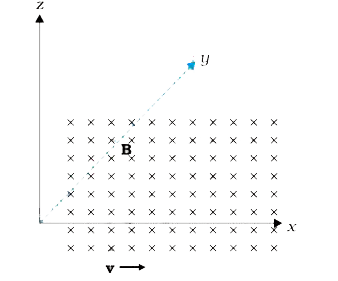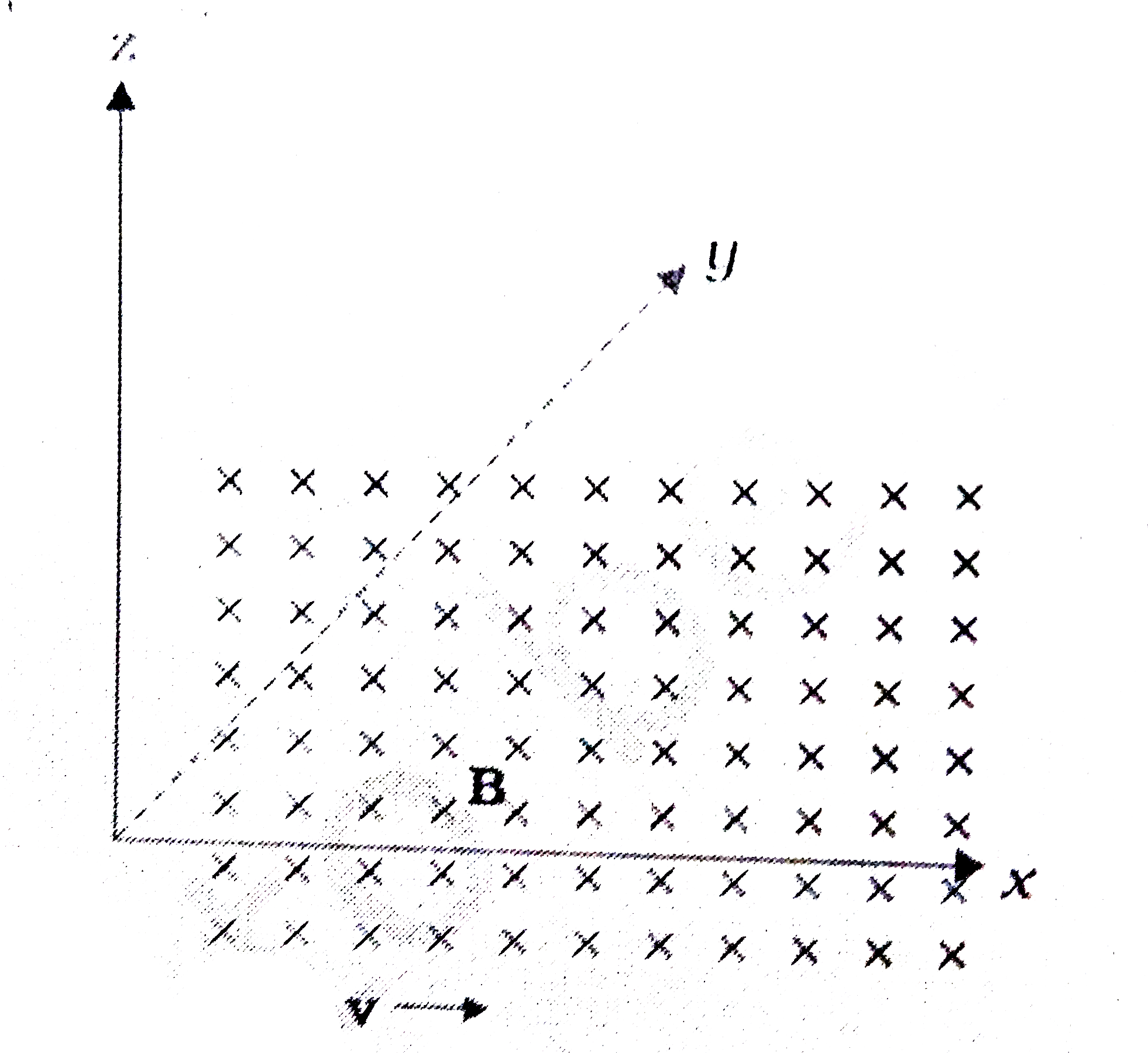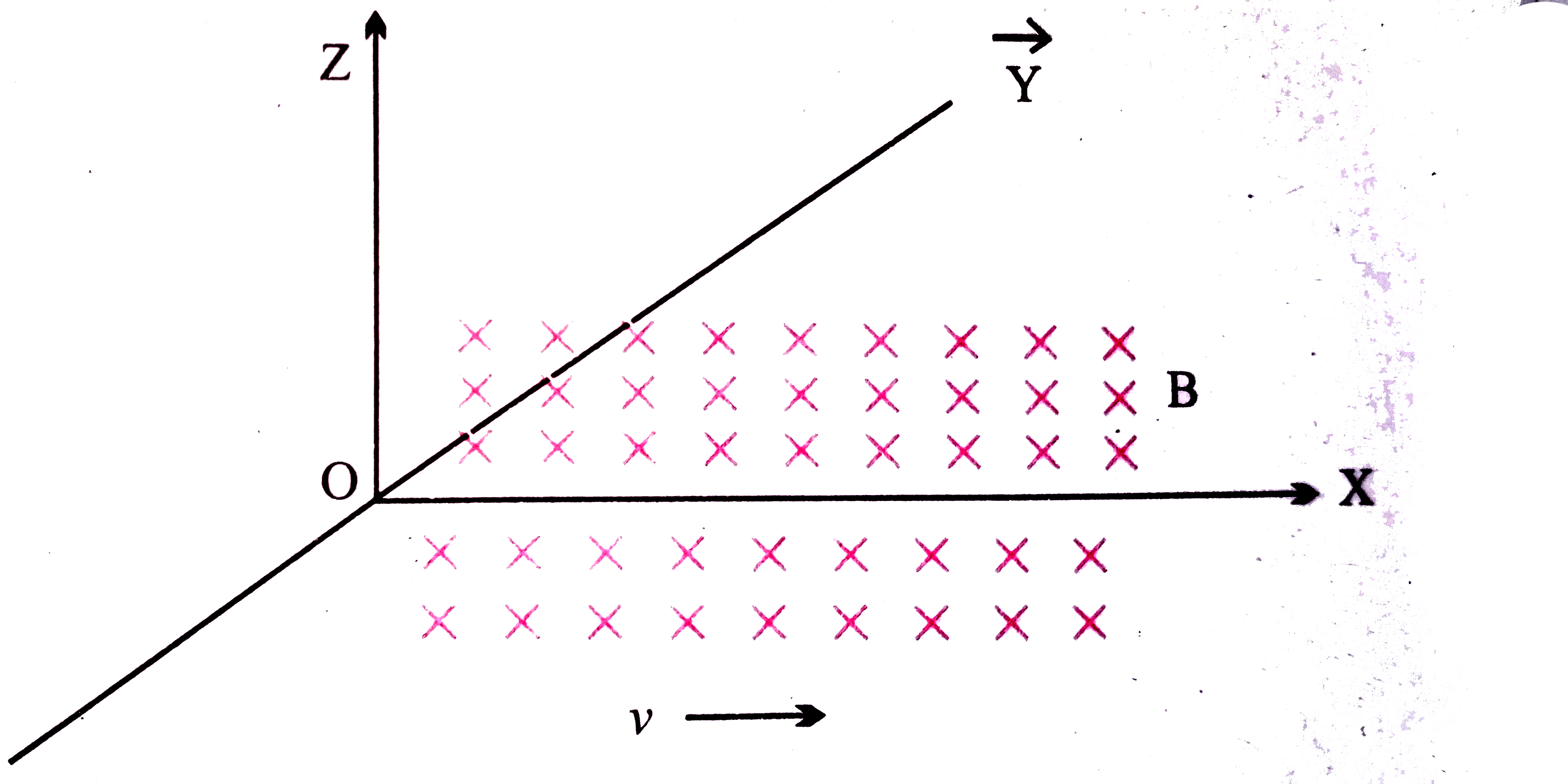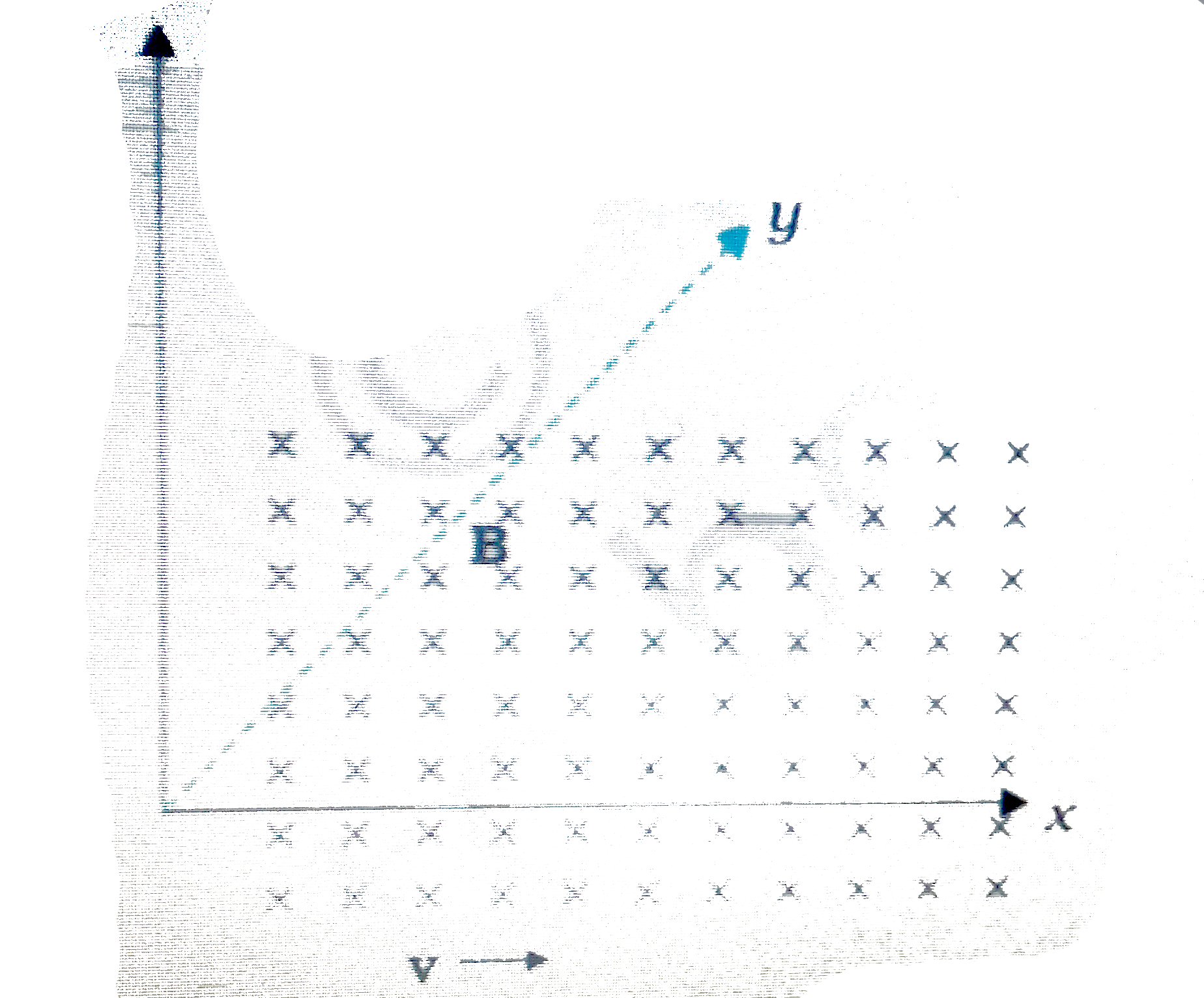If the magnetic field is parallel to the positive y-axis and the charged particle is moving along the positive x-axis (Fig. 4.4), which way would the Lorentz force be for (a) an electron (negative charge), (b) a proton (positive charge).
 Solution in Gujrati
Solution in Gujrati
The velocity v of particle is along the x-axis, while B, the magnetic field is along the y-axis, so v × B is along the z-axis (screw rule or right-hand thumb rule). So, (a) for electron it will be along –z axis. (b) for a positive charge (proton) the force is along +z axis
Topper's Solved these Questions
- MOVING CHARGES AND MAGNETISM Book:NCERT GUJARATIChapter:MOVING CHARGES AND MAGNETISM Exercise:EXERCISE
Explore 13 Videos
- MOVING CHARGES AND MAGNETISM Book:NCERT GUJARATIChapter:MOVING CHARGES AND MAGNETISM Exercise:ADDITIONAL EXERCISES
Explore 17 Videos
- MAGNETISM AND MATTERBook:NCERT GUJARATIChapter:MAGNETISM AND MATTERExercise:Additional Exercises
Explore 19 Videos
- NUCLEIBook:NCERT GUJARATIChapter:NUCLEIExercise:ADDITIONAL EXERCISES
Explore 9 Videos
Similar Questions
A circular coil of wire consisting of 100 turns, each of radius 8.0 cm carries a current of 0.40 A. What is the magnitude of the magnetic field B at the centre of the coil?
View SolutionTwo concentric circular coils X and Y of radii 16 cm and 10 cm, respectively, lie in the same vertical plane containing the north to south direction. Coil X has 20 turns and carries a current of 16 A, coil Y has 25 turns and carries a current of 18 A. The sense of the current in X is anticlockwise, and clockwise in Y, for an observer looking at the coils facing west. Give the magnitude and direction of the net magnetic field due to the coils at their centre.
View SolutionWhy does a paramagnetic sample display greater magnetisation (for the same magnetising field) when cooled?
View SolutionIn a periodic table the average atomic mass of magnesium is given as 24.312 u. The average value is based on their relative natural abundance on earth. The three isotopes and their masses are 2412Mg(23.98504u),2512Mg(24.98584u)and2612Mg(25.98259u). The natural abundance of 2412Mg is 78.99% by mass. Calculate the abundances of other two isotopes.
View SolutionA charged particle moves along positive y-axis with constant velocity in uniform electric and magnetic fields. Ilf magnetic fiedl is actig along positive x-axis, then, electric field should act along positive z-axis. Reason: To keep the charged particle undeviated the relation E=Bxxv must hold good.
View SolutionA positively charge particle moving along x -axis with a certain velocity enters a uniform electric field directed along positively y-axis. Its
View SolutionIf the magnetic field is parallel to the positive y-axis and the charged particle is moving along the positive x-axis (Fig.), which way would the Lorentz force be for (a) an electron (negative charge), (b) a proton (positive charge).
View Solutionयदि चुंबकीय क्षेत्र धनात्मक y- अक्ष के समांतर है तथा आवेशित कण घनात्मक x -अक्ष के अनुदिश है (चित्र 4.4 दिखिए), तो लोरेन्ज बल किस और लगेगा जबकि गतिमान कण a) इलेक्ट्रॉन (तृण आवेश) b) प्रोटोन (धन आवेश) है।

View Solutionयदि चुम्बकीय क्षेत्र धनात्मक Y-अक्ष के समान्तर है तथा आवेशित कण धनात्मक X-अक्ष के अनुदिश गतिमान है तब निम्न चित्रानुसार लॉरेंज बल किस ओर लगेगा । जबकि गतिमान कण, इलेक्ट्रॉन (ऋण आवेश), प्रोटॉन (धन आवेश) है ।

View Solutionएक प्रोटॉन धनात्मक X-अक्ष के अनुदिश गति कर रहा है, जबकि धनात्मक Y-अक्ष के अनुदिश एकसमान चुंबकीय क्षेत्र कार्य कर रहा है। प्रोटॉन पर कार्य करने वाले बल की दिशा बताईए।
View SolutionIf the magnetic field is parallel to the positive y-axis and the charged particle is moving along the positive x-axis (Fig.), which way would the Lorentz force be for (a) an electron (negative charge), (b) a proton (positive charge).

View SolutionIf the magnetic field is parallel to the positive y-axis and the charged particle is moving along the positive x-axis (figure ), which way would the Lorentz force be for (a) and electron (negative charge), (b) a proton (positive charge)
View SolutionIf the magnetic field is parallel to the positive y-axis and the charged particle is moving along the positive x-axis (Fig. 4.4), which way would the Lorentz force be for (a) an electron (negative charge), (b) a proton (positive charge).
View SolutionIf the magnetic field is parallel to the positive y-axis and the charged particle is moving along the positive x-axis (Fig.), which way would the Lorentz force be for (a) an electron (negative charge), (b) a proton (positive charge).

View SolutionIf the magnetic field is parallel to the positive Y-axis and the charged particle is moving along the positive X-axis as per figure, which way would the Lorentz force be for (a) an electron (negative charge), (b) a proton (positive charge).
View Solution